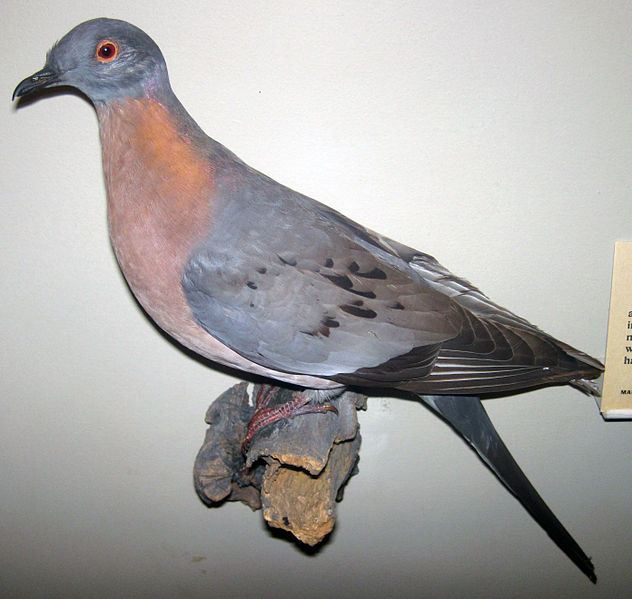Plik:Ectopistes migratorius (passenger pigeon).jpg
Appearance

Rozmiar podglądu – 632 × 599 pikseli. Inne rozdzielczości: 253 × 240 pikseli | 506 × 480 pikseli | 810 × 768 pikseli | 1080 × 1024 pikseli | 2160 × 2048 pikseli | 2784 × 2640 pikseli.
Rozmiar pierwotny (2784 × 2640 pikseli, rozmiar pliku: 1,73 MB, typ MIME: image/jpeg)
Historia pliku
Kliknij na datę/czas, aby zobaczyć, jak plik wyglądał w tym czasie.
| Data i czas | Miniatura | Wymiary | Użytkownik | Opis | |
|---|---|---|---|---|---|
| aktualny | 18:39, 2 kwi 2015 |  | 2784 × 2640 (1,73 MB) | FunkMonk | Transferred from Flickr via Flickr2Commons |
Lokalne wykorzystanie pliku
Poniższa strona korzysta z tego pliku:
Globalne wykorzystanie pliku
Ten plik jest wykorzystywany także w innych projektach wiki:
- Wykorzystanie na bn.wikibooks.org
- Wykorzystanie na en.wikipedia.org
- Holocene extinction
- Passenger pigeon
- User:Nutcracker100
- List of the prehistoric life of Alabama
- List of the prehistoric life of Florida
- List of the prehistoric life of Tennessee
- List of the prehistoric life of West Virginia
- List of the prehistoric life of North Carolina
- List of the Cenozoic life of Alabama
- List of the Cenozoic life of Wyoming
- List of the Cenozoic life of Virginia
- List of the Cenozoic life of North Carolina
- List of the Cenozoic life of Georgia (U.S. state)
- List of the Cenozoic life of Florida
- List of the Cenozoic life of California
- User:Catfurball
- User:Abyssal/Image captions to use
- Wikipedia:Userboxes/Birds
- User:Abyssal/Aspect ratio table
- User:Toohak113
- User:Diriector Doc/Ubx/Passenger Pigeon
- Wikipedia talk:WikiProject Userboxes/Ideas/Archive 15
- User:Lin Xuexi
- User:Diriector Doc/UbxGalaries/Nature
- User:Wikiselkie
- User:Geekgecko
- User:Missingnohk97
- User:Cedelmwood/Userboxes
- User:Mishmash Ideas
- User:좀비 브렌다
- User:Pinkelekoladele
- User:Asocos
- User:CryolophosaurusEllioti/Userboxes
- User:.samtxt.
- User:Pigginn
- User:Trashgoose
- User:WHEOOButEncyclopedia
- User:Davefrfr
- User:Mushroom133
- User:Locust Valley
- User:I.Do.In.Fact.Exist
- Wykorzystanie na en.wikibooks.org
- Wykorzystanie na es.wikipedia.org
- Wykorzystanie na fr.wikipedia.org
- Wykorzystanie na ka.wikipedia.org
- Wykorzystanie na la.wikipedia.org
- Wykorzystanie na no.wikipedia.org
- Wykorzystanie na pt.wikipedia.org
Pokaż listę globalnego wykorzystania tego pliku.
